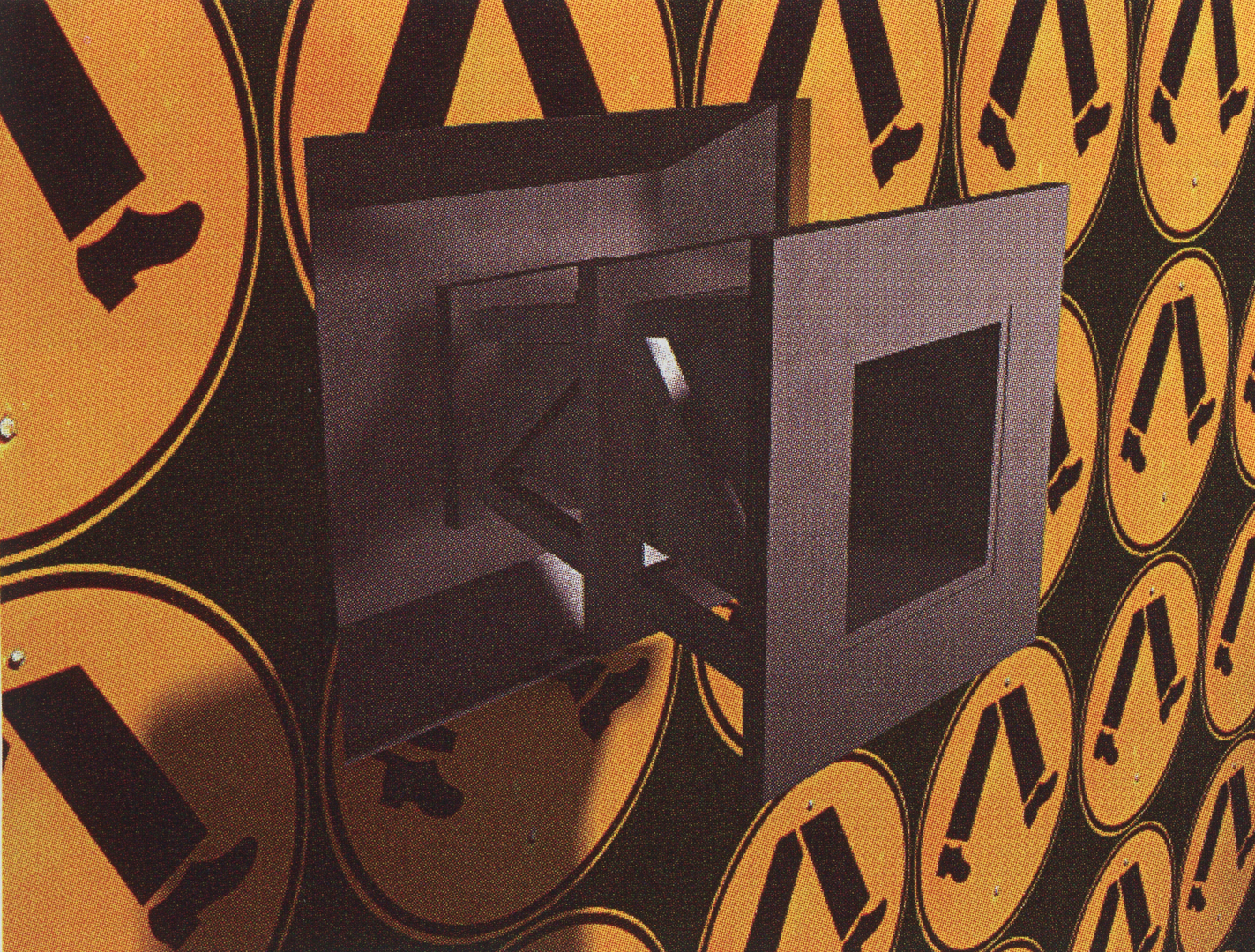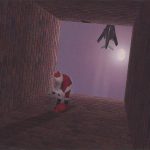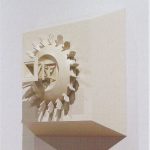Brit Bunkley: Large-scale Rapid Prototype Sculptures
Artist(s):
Title:
- Large-scale Rapid Prototype Sculptures
Exhibition:
- SIGGRAPH 2002: Art Gallery
-
More artworks from SIGGRAPH 2002:


Creation Year:
- 2002
Size:
- 500 x 500 x 300 mm
Category:
Artist Statement:
Although I originally used digital imaging as an element of the design process for public sculpture and installations in the early 1990s, I now use the computer primarily for creation of virtual sculpture and installation. With the recent introduction of 3D prints (rapid prototyping and CNC technology, as pioneered by a number of artists in the late 1990s), the “virtual” has returned to the “actual” by creating physical models from digital files. It is my intention to locate a common ground between the virtual 3D still and moving images, and 3D physical prototypes.
I find 3D digital media especially conducive to illustrating disturbing social/political perspectives of neoliberal “globalised” modern life. The vicissitudes of neoliberal globalism is one of several reoccurring themes in recent years, represented by (clenched and outstretched) hand symbols, speakers, the abstract schematic letters of logic and math (e.g. “x”, “y”, “z”), the globe, television, diffused transnational corporate symbols, cartoon characters as corporate metaphors, and other iconic symbols of the modern world.
My computer currently functions not only as an aid in visualizing and designing large-scale sculptures or installations, but now it essentially functions as a tool to depict objects that would not or could not be built: impossible images. With an affinity to staged photography, these images attempt through ambiguity of scale, material, reflection, and perspective to blur the line between images of virtual and actual objects. The computer prints and videos often capture a virtual image in a believable but slightly skewed setting that is both convincing and unsettling. In this context, the virtual sculptures and monuments are props in a virtual “installation” that are separated from the real by the edge of the print or video field.
Most recently, I have begun creating sculptures directly from virtual 3D files using new rapid-prototyping (RP) techniques from digital files sent via email, often to remote sites (in the tradition of the various electronic “art correspondence production” by Moholy-Nagy and Donald Judd). The RP techniques have been LOM and Z-Corp. 402 printer processes.
Technical Information:
The primary software used for modeling and rendering the 3D objects and scenes is 3D Studio Viz 3. Some elements of the scenes were built in Mechanical Desktop in order to take advantage of its efficient Boolean capability, then exported to 3D Studio Viz 3. All work was produced on a dual Pentium computer. The bitmaps of mapped images and renderings were scanned and edited in Photoshop. The final images were printed as both Lamda photographs and high-resolution Canon inkjet prints.
Process Information:
Many of the forms and mapped images I have used appear simultaneously in several works, since I interchange the same, or similar, forms and concepts from the same images and related 3D models. For example, a “TV” form was used in a rapid prototype, Hand Machine 1, the animation Spanish Wall, and the print Spanish Icon.
Images of Spanish Civil War posters were processed with the bas relief filter in Photoshop and then mapped onto both the “TV” and walls of the “stadium” within the animation Spanish Wall and they were mapped onto the print Spanish Icon. The “loudspeaker on a truck” and megaphone photographs (originally from the book 1936 by the Ex) influenced creation of the print Containment as well as the rapid prototype “Globe.” Other photographs appear in animations and other prints, as do the Australian street signs mapped onto Containment.
The hands used in the Spanish Icon print and Spanish Wall video reappear on several other models including the Hand Machine rapid prototype included in the illustrations. The inspiration for the use of the hand came from the proliferation of the hand graphic symbol in the United States as well as more traditional representations as illustrated with the tiff images of my wife’s prayer plaque and hand broach.
All these processes, and more, are adequately documented at SIGGRAPH 2002.
Other Information:
PROJECT PROPOSAL
I propose to build one or more large-scale digital rapid-prototype sculptures at SIGGRAPH 2002 by “printing” sections of the sculpture, then joining together the sections, producing sculpture(s) at a scale significantly larger than the allowable envelope of rapid-prototyping machines. Hand Machine 2, recently completed, is to be built at a scale approximately three times the scale possible in a single build of most current rapid-prototyping machines. The new large-envelope rapid-prototyping machines or a CNC machine will allow a scale approximately six times the size of the recently completed prototype illustrated in the accompanying photograph.
The sculpture(s) will be built/printed at SIGGRAPH 2002 using the rapid-prototyping equipment available in the Studio. The. printed sections, using the largest envelope possible from the rapid-prototyping machines, will be epoxied together and the seams sealed, the seals becoming part of the overall design element, indicating the process of fabrication.
In addition, to building rapid prototypes, I will also create related 2D prints as output on the large-format printer.
Images:
1-4: Influences
5-6: Rapid prototype sculptures
7: Screen grabs
8-11: Maps










